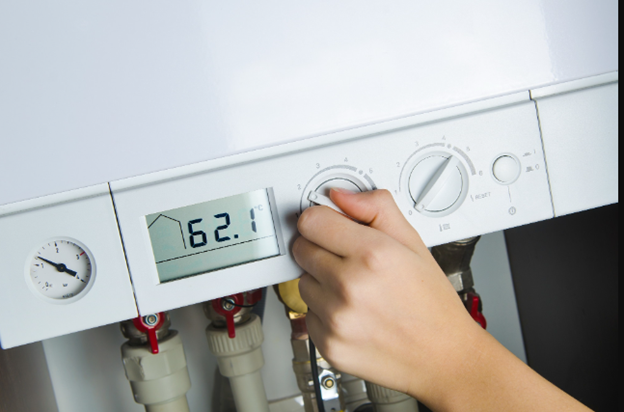Are you looking for a new way to keep your house warm this winter season? Are you interested in adding to your home’s beauty, efficiency, and sustainability with a new heating system? Change your plans from gas or propane to a newer, better way to heat your home with a pellet stove.
Pellet stoves offer a myriad of benefits, whether you’re using them to heat an entire house or simply a single room. If you want to learn more about the many uses of pellet stoves, stick with us here in this article.
We’ll go through everything you need to know about these home heating systems for your home.
Introduction to Pellet Stoves as a Home Heating Option
The stove works by burning wood pellets, which are small and cylindrical and are usually made from compressed sawdust and various other natural materials. Pellet stoves are an efficient fuel source and create a comfortable environment by providing warmth and air circulation in the home.
They are an affordable heating option, with the cost of buying a pellet stove and its total running costs, being much lower than traditional forms of heating. Pellet stoves also have very low emissions and are much more eco-friendly than other fuel sources.
How Pellet Stoves Work?
Pellet stoves work by burning small, compressed pellets of wood and other biomass. The pellets are fed into the stove through a hopper and are ignited by a heating element, usually fed by electricity. The heat from the burning pellets is used to heat the room and can often be supplemented by a fan to help circulate the heat further.
The level of heat is controllable with the use of a thermostat and can be adjusted based on the level of comfort you need in the room. Pellet stoves can last for years and require very little maintenance. As long as the hopper is filled with the pellets burned for fuel, the system should continue to work efficiently.
Benefits of Using Pellet Stoves for Home Heating
They are energy efficient, producing up to 80% efficiency ratings, and are easy to operate with the aid of a digital thermostat. Pellet stoves can provide extended heat, backing up electric heating during storms, outages, and other interruptions. They are also environmentally friendly, producing a fraction of the carbon produced by a wood-burning stove and virtually no smoke.
Pellet stoves are a great addition to any room they are located in due to the fact that they help to maintain a constant temperature and take up minimal space. In addition, they have adjustable heat settings, allowing homeowners to customize the heat to their desired level.
Types of Pellet Stoves
Pellet stoves are becoming popular due to their ability to provide efficient heating. They are powered by pellets (recycled wood) and create a clean burning fire. There are two types of pellet stoves; freestanding and insert. The freestanding model is designed to sit on the floor and is usually the preferred option since it is easy to operate.
The inserted model, on the other hand, is designed to fit into the existing fireplace. Both types of pellet stoves are equipped with a hopper where the pellets are stored and a combustion fan that distributes the heat. Additional features like adjustable heat settings, programmable thermostats, and safety sensors can be added as desired.
Pellet stoves are relatively inexpensive to buy and easy to maintain. They also require very little energy to operate, thus saving money on energy bills. If you’re looking to heat your home with a reliable and safe source of energy, ComfortBilt Stoves are the way to go.
Factors to Consider When Choosing a Pellet Stove
Pellet stoves provide an efficient and relatively low-cost heating alternative for many homeowners. When considering a purchase, there are a few factors to consider.
Size and Heating Capacity of Pellet Stoves
Depending on the size of your space, you’ll need to decide on the size of the pellet stove. While a pellet stove is much smaller than a traditional wood-burning stove, you want to make sure the model is a good size for your space. The type of fuel you want to burn also plays a role in determining the size of the stove.
When it comes to the heating capacity, pay close attention to the manufacturer’s specifications. The square footage that the stove is rated for is a good indication of how much heat it can produce. Many manufacturers will provide a BTU (British Thermal Unit) rating, which can give you a good idea of the stove’s efficiency.
Installation of a Pellet Stove
First, it is important to choose a stove of the right size and power rating for the space it is to be installed. The size of the venting system used to exhaust the exhaust must also be appropriate to the model chosen.
Additionally, the aesthetic of the stove must be taken into consideration in relation to the particular space where it will be installed. Another factor in the installation process is compliance with any applicable building codes and regulations. Finally, an assessment of clearance distances from walls and other objects is required to ensure safe operation.
Venting Options for Pellet Stoves
Although some models run without a vent or a chimney, most require a dedicated vent to the outside. The vent can be direct-vented through an outside wall, connected to an existing masonry chimney, or installed as a vent-free stove using sealed air loops to circulate heat in the room.
Direct-vented pellet stoves are the least expensive option, although a chimney is more efficient. Vent-free stoves produce more heat and require less maintenance, while a sealed air loop distributes heat more evenly.
Pellet Storage and Handling
Pellet stoves require ample, dry, and dedicated storage space for fuel. It is also important to research local laws and regulations regarding the storage of combustible materials like pellets. Secondly, you should consider the tools and equipment needed to properly handle and carry the pellets from your storage area to your stove.
This includes heavy-duty pellet scoops and scuttle, protective gear (eg. gloves and eyewear), proper buckets and tarps for indoor use, and brushes for cleaning pellet stoves. Lastly, you should consider proper ventilation for your pellet stove room and safety protocols to protect against easy access to combustible materials like pellets.
Comparing Pellet Stoves to Other Home Heating Options
Pellet stoves are a popular home heating option compared to other traditional heating sources such as wood stoves, natural gas, and electric furnaces. They provide cozy, economical, and efficient heat that can help you save money on your utility bills. When compared to other heating sources, pellet stoves burn clean, renewable fuel, so they’re good for the environment.
Additionally, they are less labor-intensive to operate since they require minimal refueling and maintenance. Compared to wood stoves, pellet stoves burn more efficiently, require less mess, and are much safer to use since they come with automated features such as fire sensors, shut-offs, and oxygen sensors.
Cost Considerations for Pellet Stoves
The initial cost is the main consideration when it comes to selecting a pellet stove. The cost of a new pellet stove is more expensive than a traditional stove. However, there are rebates that can offset this cost. The price of the stove, installation, and any necessary venting materials should be taken into account.
Furthermore, pellet stoves require electricity to operate, and as a result, it is important to factor in the additional electricity costs. Pellets for use in the stove are an additional cost and should be budgeted for depending on the stove’s and the surrounding area’s pellet prices. Generally, pellet stoves cost around $2,000 or more, but this cost can be easily recouped over the years in the form of reduced energy costs.
Environmental Impact of Pellet Stoves
Pellet stoves are a type of clean-burning fire source that utilizes compressed wood pellets as fuel. These pellets are made from recycled sawdust and wood materials that would have typically gone to waste. The environmental impact of pellet stoves is much more beneficial than the more traditional burning of wood.
Pellet stoves are not only much more efficient in burning fuel, producing up to six times the heat per kilogram quality of traditional wood, but also produce almost 70% less carbon dioxide and ash. The quality of the air released from pellet burning is also cleaner, spreading fewer pollutants and toxic fumes. In addition to this, these stoves are relatively easy to maintain and require manual cleaning only once a month and refilling once a week.
Is a Pellet Stove Right for Your Home Heating Needs?
Overall, pellet stoves are a great way to save money on home heating. To check if a pellet stove is the right choice for your home, talk to a professional about the available models, safety features, and energy savings you could expect. Get started on improving your home’s heating efficiency today!
Check out our other blog posts for more improvement tips and advice.



